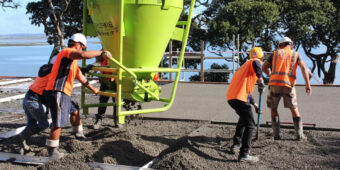Granny flat exemption clears select committee with minor changes
03 Oct 2025, Building & Housing, Industry News, News, Regulatory

The Government’s proposal to exempt granny flats from the building consent process has taken a major step forward, with the Transport and Infrastructure Select Committee recommending the Bill proceed with clarifying amendments
The Building and Construction (Small Stand-alone Dwellings) Amendment Bill will allow dwellings up to 70m², often referred to as granny flats, to be built without a building consent – provided they meet a strict set of conditions, including:
- The dwelling is simple in design and would comply with the Building Code.
- Building work would be carried out by authorised professionals.
- Councils were notified prior to, and on completion of, building work.
Select Committee calls for clarity
The Select Committee has endorsed the Bill but recommended several amendments to improve its workability and close potential gaps in accountability. These include:
- Clarifying definitions for “final design plans” and “preliminary design plans” to avoid ambiguity over what must be submitted.
- Strengthening language to make clear that a Project Information Memorandum (PIM) must be obtained before construction starts, not just optionally applied for.
- Confirming that a PIM is only required for the final site, not any temporary or factory build location.
- Expanding the information councils must include in the PIM, such as:
- Whether natural hazards are present or uncertain.
- Whether the build might worsen a hazard.
- What local bylaws or district plan rules might affect the build.
- Providing liability protections for councils, who act in good faith when issuing PIMs, especially since they will not be assessing or signing off the work itself.
- Clarifying that building work must be carried out in accordance with the final design plans to avoid a breach of implied warranties.
The Select Committee also made clear that non-consented building work is still subject to other legislation and clarified that granny flats cannot contain a mezzanine floor. The Select Committee also “encouraged the Minister to monitor” whether provisions relating to building height and foundation height need to be adjusted in the future, as trades evolve and competencies increase in these areas, which may introduce more complex and high-risk foundation and roofing designs.
Further changes
The Select Committee also added: “We consider that it is very important for people to properly understand that some resource consents may still be required, despite not needing a building consent for the building itself. We are advised that requirements for resource consents are set out in local authorities’ district and regional plans.”
Another proposed amendment recommended listing specific requirements for water supply, sanitary plumbing and drainage systems – rather than the current “simple” requirement.
The Select Committee recommended three major amendments, along with some minor wording changes, to improve workability of these provisions. These are to:
- Insert a new paragraph into subclause (1) to require any on-site system to be designed and built in accordance with any applicable Acceptable Solution set out in subsection (1)(h)(i), and Verification Methods E1/VM1 and G13/VM4 (if applicable).
- Insert a new subclause to clarify that connection to a network utility operator system or an on-site system, or building work in connection with an on-site system, would not require a building consent.
- Insert a new clause into the Schedule which sets out definitions including:
- “not available”, in relation to a network utility operator system, meaning that there is not a system sufficiently close to the dwelling, or that a system that is sufficiently close does not have enough capacity.
- “on-site system”, meaning a system for the independent management of stormwater, wastewater, or water supply that does not connect to a network utility operator system.
The proposed clause 3 would also define all Acceptable Solutions and Verification Methods referred to in the Schedule.
Following the Select Committee’s recommendations, the proposed changes were backed unanimously by all parties. The bill is expected to pass by the end of the year.
Register to earn LBP Points Sign in



